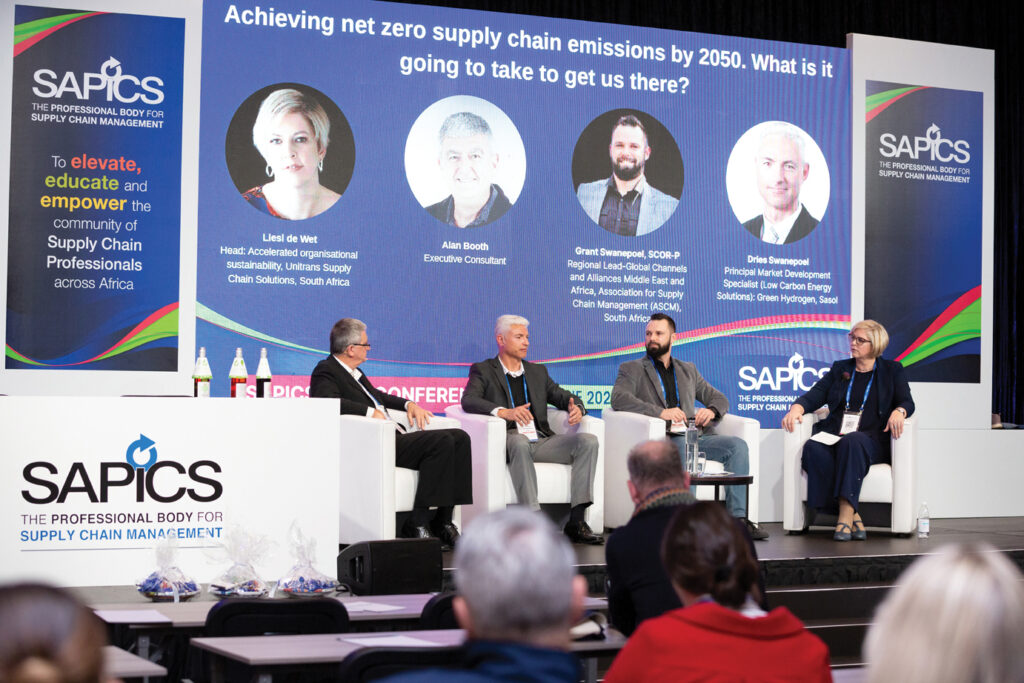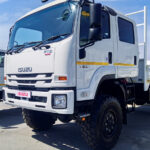Road to net-zero carbon emissions: No quick and easy fix
Road to net-zero carbon emissions: No quick and easy fix
While sustainability, circularity and the goal of net-zero emissions by 2050 are topping the agendas of organisations around the world, South Africa is caught in a chicken-and-egg situation that is delaying the roll out of clean energy and alternate fuels.
This was a key message from the experts who took part in a thought-provoking panel discussion on the management of supply chain’s climate impact and the journey to achieving net-zero emissions by 2050 at the 2022 SAPICS Conference for supply chain professionals.
Transportation is one of supply chain’s biggest contributors to carbon emissions. Sasol’s Dries Swanepoel said that while there is no silver bullet, alternate fuels like green hydrogen and natural gas, batteries and improvements to existing fuels all have a role to play.
“We will need a combination of technologies. The challenge in South Africa, however, is the lack of infrastructure to support them,” he noted. “We need charging stations for electric vehicles. We need places to fill up with green hydrogen fuel. To start, we need the vehicles to justify the investment in infrastructure. It is a classic case of what comes first: the chicken or the egg. From a capital point, a great deal of careful thought is needed,” he stressed.
Swanepoel is Sasol’s principal market development specialist for low carbon energy solutions and green hydrogen. He said that the high cost of alternate fuels like green hydrogen is a factor, especially in a developing country like South Africa, where the green energy imperative must be balanced against issues like poverty and high unemployment.
South Africa’s unique situation also featured in the insights shared by panellist Alan Booth. “We must separate sentiment from sustainability,” Booth stressed. He echoed Swanepoel’s contention that South Africa has issues and challenges that make its net-zero journey and timeline different to that of developed countries. “In South Africa, 40% of our people do not have access to formal waste disposal,” he stated.
Booth noted, however, that the country does have some good sustainability stories to tell. “South Africa’s waste pickers or informal reclaimers are the backbone of our circular economy. It is a little-known fact that we are actually one of the best mechanical recycling countries in the world because of our waste pickers.”
Looking at sustainability versus sentimentality, Booth said that a huge amount of focus is on plastic pollution and reducing plastic waste. However, he noted that more energy is consumed to produce kraft paper than plastic. He also examined food waste and the plastic wrap that can be used to reduce it. “South Africa produces millions of tonnes of food waste every year. Consider that a piece of plastic wrap weighing just 1.5g will keep a cucumber fresh for 14 days,” he urged SAPICS attendees.
The Association for Supply Chain Management’s (ASCM’s) Grant Swanepoel noted that most organisations’ sustainability programmes encompass energy and water usage and the materials used in their production processes, but do not always consider product lifecycle management. “We need a complete cradle-to-grave view that includes the disposal of products. This is the foundation on which to build a circular economy where multiple industries can interact to eliminate waste because one organisation’s waste or by-product is another’s gold,” he said.
Published by
Focus on Transport
focusmagsa






 FUSO: Driving the Future of Mobile Healthc
FUSO: Driving the Future of Mobile Healthc



 New Electric Van Range Unveiled!
New Electric Van Range Unveiled!  A brand
A brand




 Wondering about the maximum legal load for a
Wondering about the maximum legal load for a 
 The MAN hTGX powered by a hydrogen combus
The MAN hTGX powered by a hydrogen combus


 Exciting News for South African Operators
Exciting News for South African Operators






